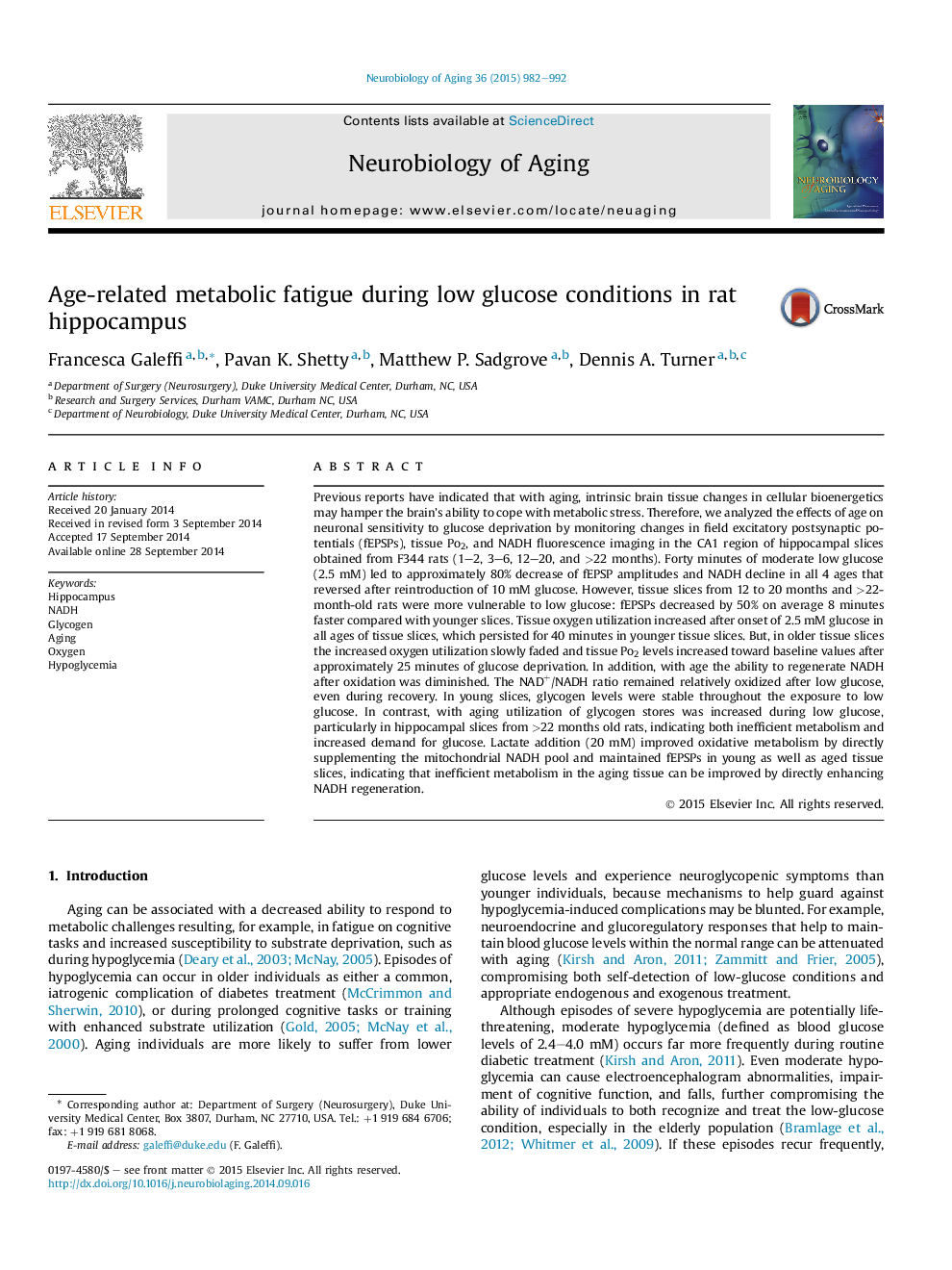| Article ID | Journal | Published Year | Pages | File Type |
|---|---|---|---|---|
| 6804902 | Neurobiology of Aging | 2015 | 11 Pages |
Abstract
Previous reports have indicated that with aging, intrinsic brain tissue changes in cellular bioenergetics may hamper the brain's ability to cope with metabolic stress. Therefore, we analyzed the effects of age on neuronal sensitivity to glucose deprivation by monitoring changes in field excitatory postsynaptic potentials (fEPSPs), tissue Po2, and NADH fluorescence imaging in the CA1 region of hippocampal slices obtained from F344 rats (1-2, 3-6, 12-20, and >22Â months). Forty minutes of moderate low glucose (2.5Â mM) led to approximately 80% decrease of fEPSP amplitudes and NADH decline in all 4 ages that reversed after reintroduction of 10Â mM glucose. However, tissue slices from 12 to 20Â months and >22-month-old rats were more vulnerable to low glucose: fEPSPs decreased by 50% on average 8Â minutes faster compared with younger slices. Tissue oxygen utilization increased after onset of 2.5Â mM glucose in all ages of tissue slices, which persisted for 40Â minutes in younger tissue slices. But, in older tissue slices the increased oxygen utilization slowly faded and tissue Po2 levels increased toward baseline values after approximately 25Â minutes of glucose deprivation. In addition, with age the ability to regenerate NADH after oxidation was diminished. The NAD+/NADH ratio remained relatively oxidized after low glucose, even during recovery. In young slices, glycogen levels were stable throughout the exposure to low glucose. In contrast, with aging utilization of glycogen stores was increased during low glucose, particularly in hippocampal slices from >22 months old rats, indicating both inefficient metabolism and increased demand for glucose. Lactate addition (20Â mM) improved oxidative metabolism by directly supplementing the mitochondrial NADH pool and maintained fEPSPs in young as well as aged tissue slices, indicating that inefficient metabolism in the aging tissue can be improved by directly enhancing NADH regeneration.
Related Topics
Life Sciences
Biochemistry, Genetics and Molecular Biology
Ageing
Authors
Francesca Galeffi, Pavan K. Shetty, Matthew P. Sadgrove, Dennis A. Turner,
